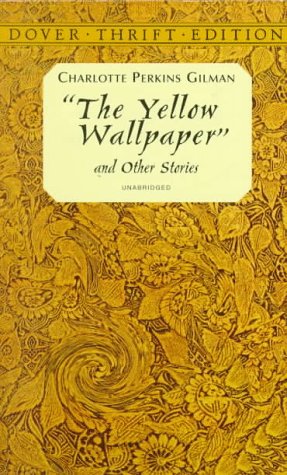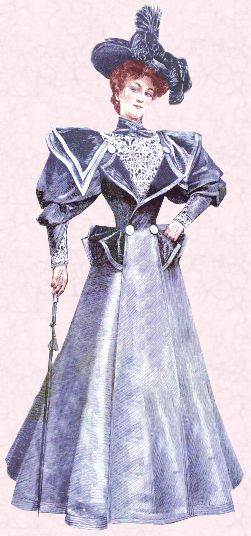
Now I'd like to move on to women's writing: Emily Dickinson's poems, Charlotte Perkins Gilman's "The Yellow Wallpaper," and the concept of True Womanhood. The picture above refers to Elaine Showalter's recent study on women's writing in America from Puritan New England's Anne Bradstreet to contemporary author Annie Proulx. (Here's a link to Katha Pollitt's review of Prof. Showalter's study:
http://www.slate.com/id/2213111 .)
For information about Raise the Red Lantern and "Stale Mate," see this link:
http://worldlit2.multiply.com/journal/item/168
More information about Emily Dickinson (1830-1885) and Charlotte Perkins Gilman (1860-1935) follows.
We read the following poems by Emily Dickinson:
"They shut me up in Prose," "My Life had stood--a Loaded Gun--," and "I Heard a Fly buzz." All but the last reading are in Vol. 5 of our anthology. See this link for the last poem:
http://www.poets.org/
For reviews of recent books on Emily Dickinson, see the following links:
http://worldlit2.multiply.com/journal/item/150/White_Heat_The_Friendship_of_Emily_Dickinson_Thomas_Wentworth_Higginson
http://worldlit2.multiply.com/journal/item/151
http://worldlit2.multiply.com/journal/item/170
I also want to link to Higginson's translation of Petrarch's sonnet here:
http://www.sonnets.org/petrarch.htm#010
Contemporary poet A.M. Juster's translation may be found here:
http://www.amjuster.com/poem14.html
The picture below is the cover of Brenda Wineapple's recent White Heat, which retells the correspondence between Emily Dickinson and editor T.W. Higginson.

 The painting above is Maria Spartali Stillman's depiction of Petrarch's first glimpse of Laura, the woman he addressed in 365 of the 366 poems in his Canzionere. She may well be a symbol of love and beauty as the two never really met.
The painting above is Maria Spartali Stillman's depiction of Petrarch's first glimpse of Laura, the woman he addressed in 365 of the 366 poems in his Canzionere. She may well be a symbol of love and beauty as the two never really met.I also want to include a map that shows where Amherst, Emily Dickinson's hometown, is.
 We also talked about "The Yellow Wallpaper" as a story about a woman's experience of postpartum depression and as a horror story. For more information about postpartum depression, see this link:
We also talked about "The Yellow Wallpaper" as a story about a woman's experience of postpartum depression and as a horror story. For more information about postpartum depression, see this link:http://www.mayoclinic.com/health/postpartum-depression/DS00546
For more information about the "rest cure" that the narrator and Perkins Gilman underwent, see this link:
http://www.hsl.virginia.edu/historical/reflections/fall2008/rest.html
This article from the American Psychological Association discusses the rest cure and its successor, the work cure:
http://www.apa.org/monitor/2010/05/cures.aspx
 The picture above gives you an idea of what the yellow wallpaper might have looked like. Victorian decor was known for its elaborateness and, as some say, tastelessness.
The picture above gives you an idea of what the yellow wallpaper might have looked like. Victorian decor was known for its elaborateness and, as some say, tastelessness.
 However, if one tones it down, the Victorian style can be quite colorful and cozy.
However, if one tones it down, the Victorian style can be quite colorful and cozy. Here is the information about True Womanhood.
Here is the information about True Womanhood.True Womanhood (19th c.)
Purity
Piety
Domesticity - Domestic Science
Submission
Hannah More - the exception that proves the rule (she helped promote the doctrine of separate spheres and female submission, but she made her living as a writer and educator.)
Women wrote literature to instruct morally more than intellectually.
Angel in the House (Victorian era) - woman as moral influence
Separate spheres (man--public; woman--home)
This picture appears to be from the early Victorian era (1830s/1840s) when attitudes towards women were most conservative.
 By the 1860s, dresses became quite unwieldy. This woman below is wearing a dress of crinoline, an extremely heavy fabric. Between the circumference of a woman's dress and reliance on candles & wood-burning stoves, this type of dress sometimes caught fire, killing the woman wearing it.
By the 1860s, dresses became quite unwieldy. This woman below is wearing a dress of crinoline, an extremely heavy fabric. Between the circumference of a woman's dress and reliance on candles & wood-burning stoves, this type of dress sometimes caught fire, killing the woman wearing it. The final picture below dates from 1895, shortly after The Yellow Wallpaper was written.
The final picture below dates from 1895, shortly after The Yellow Wallpaper was written.  Compare the outfit from 1924 that the woman below is wearing. Note that she is depicted with a set of golf clubs. It would have been impossible for the Victorian woman to play golf.
Compare the outfit from 1924 that the woman below is wearing. Note that she is depicted with a set of golf clubs. It would have been impossible for the Victorian woman to play golf. See this link for my review of Clever Maids, a book about the women who provided the Brothers Grimm with their stories:
See this link for my review of Clever Maids, a book about the women who provided the Brothers Grimm with their stories:http://worldlit2.multiply.com/journal/item/147
No comments:
Post a Comment